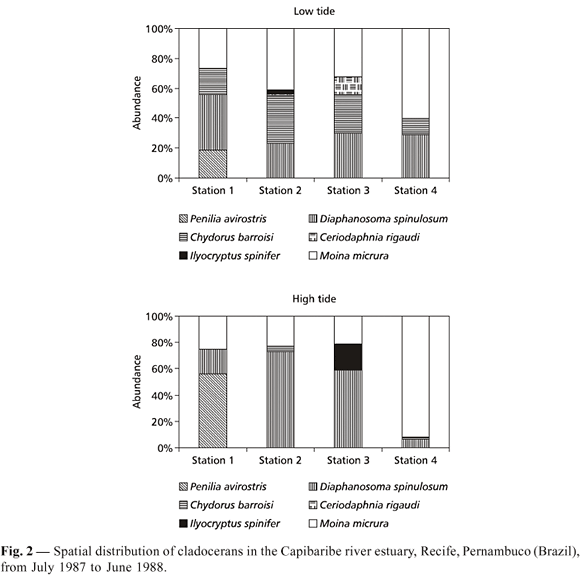The study was conducted in the Capibaribe river estuary in Recife (Brazil) to assess the role played by cladocerans in a eutrophic environment. Samplings were carried out monthly at 4 fixed stations along the estuary from July 1987 to June 1988. Collections were made with a plankton net of 65 micrometers mesh size. Six cladocerans species were registered: Penilia avirostris, Diaphanosoma spinulosum, Chydorus barroisi, Ceriodaphnia rigaudi, Ilyocryptus spinifer, and Moina micrura. The most frequent species was Moina micrura with 49%. The only true marine species was Penilia avirostris, which was registered at station 1 (close to the river mouth), during high and low tide and in the dry season. The Cladocera average density decreased from 329 ind.m-3 (August 1987, high tide) to 2 ind.m-3 (March 1988, high tide) due to the high load of organic and chemical pollution received by the estuary. At all stations, D. spinulosum, M. micrura, and C. barroisi occurred with a wide distribution, mainly during the rainy season. C. rigaudi and I. spinifer were rare, occurring only during the rainy season. Cladocerans played an important role in the food webs of the plankton community of the Capibaribe tropical estuary and the dominance of a few small species indicated a hypereutrophic environment. A high level of disturbance was indicated by the decline in diversity of specialized species and the increase in abundance of opportunistic species like M. micrura.
cladocerans; indicators; environmental quality; estuarine; zooplankton







